
Now, a new question is stealing the spotlight, How do I make sure my content appears in ChatGPT answers?
With AI tools like ChatGPT becoming a go-to place for people to search, learn, and even shop, showing up in AI-generated responses is quickly becoming just as important as appearing on traditional search engines. In many cases, ChatGPT relies on a mix of training data, real-time search, and trusted sources to generate answers and if your website is optimized right, your brand can become part of those answers.
Whether you run a company, write blogs, or offer services, learning how to optimize for tools like ChatGPT can help you reach a bigger audience, drive more traffic, and position yourself as an authoritative voice in your niche. And if you’re not sure where to start, the best SEO company in Kerala can help you create the right strategy to get noticed by both Google and AI tools.
In this article, we’ll break down the specific steps you can take, share examples, and give you actionable suggestions to help your content stand out, not just in Google, but in the conversations happening inside ChatGPT.
ChatGPT Optimization vs. Traditional SEO
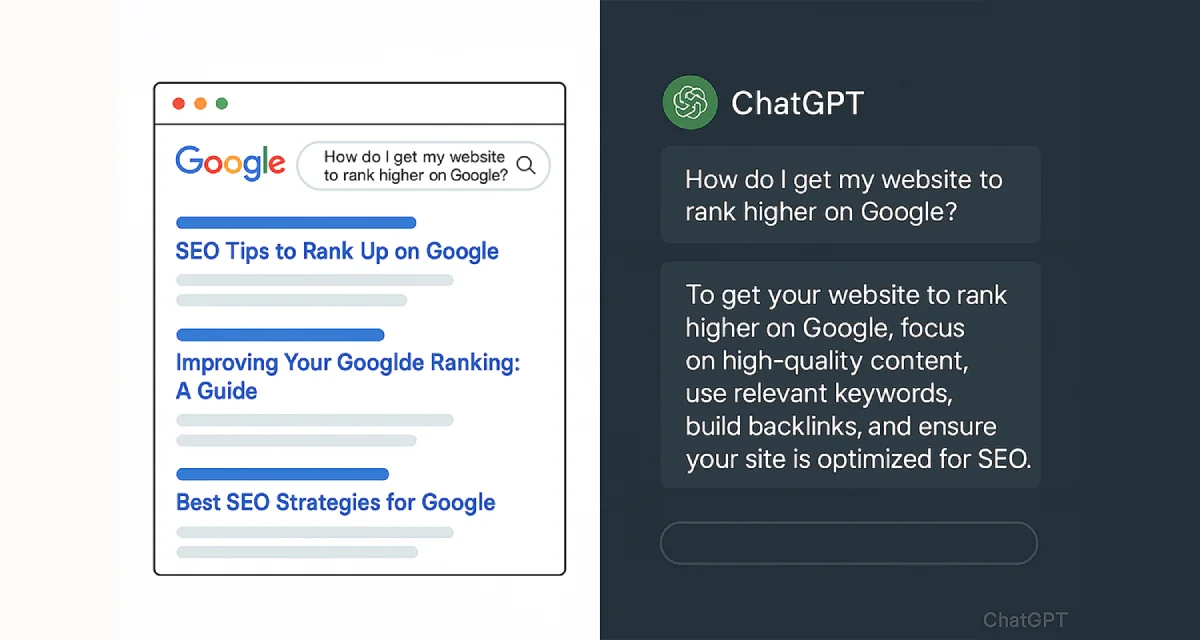
For years, traditional SEO has been the backbone of online visibility, craft high-quality content, include relevant keywords, build backlinks, and climb the Google Search rankings. And while that’s still essential (Google still processes over 8.5 billion searches per day), the way people look for information is changing fast.
In 2025, more than 20% of online users say they now go to AI tools like ChatGPT or Perplexity AI before even opening a search engine. That means if you want your site to appear where your audience is looking, you need to optimize for AI-generated responses as well as search engines.
| Traditional SEO | ChatGPT Optimization |
|---|---|
| Competes for positions in search results on Google, Bing, etc. | Aims to be included in ChatGPT answers and conversational AI responses. |
| Relies heavily on keyword targeting, on-page SEO, and link-building. | Relies on authoritative data, brand mentions, and content AI models can easily interpret. |
| Success measured in clicks from search engines | Success measured in brand visibility inside AI-generated text, which may still lead to traffic indirectly. |
| Google uses hundreds of ranking factors including page speed and mobile optimization. | ChatGPT relies on training data, trusted sources, and sometimes live web results. |
| You optimize for a search engine algorithm. | You optimize for a large language model (LLM) and its ability to understand, trust, and cite your content. |
Key Takeaways
Let’s unpack that picture step by step:
- In traditional search engines, you’re trying to be the top result when users type queries.
- In ChatGPT optimization, you want your content woven into AI answers so it’s mentioned or referenced when users ask questions.
- Structured data like schema markup, clear headings, and citing sources can make it easier for AI to find and use your content.
- Both require great content but ChatGPT favors information that is clear, factual, and helpful over keyword-heavy text.
In short, Google SEO gets people to your site, but ChatGPT optimization gets your brand into the conversation before they even search.
Understanding How ChatGPT Sources Information
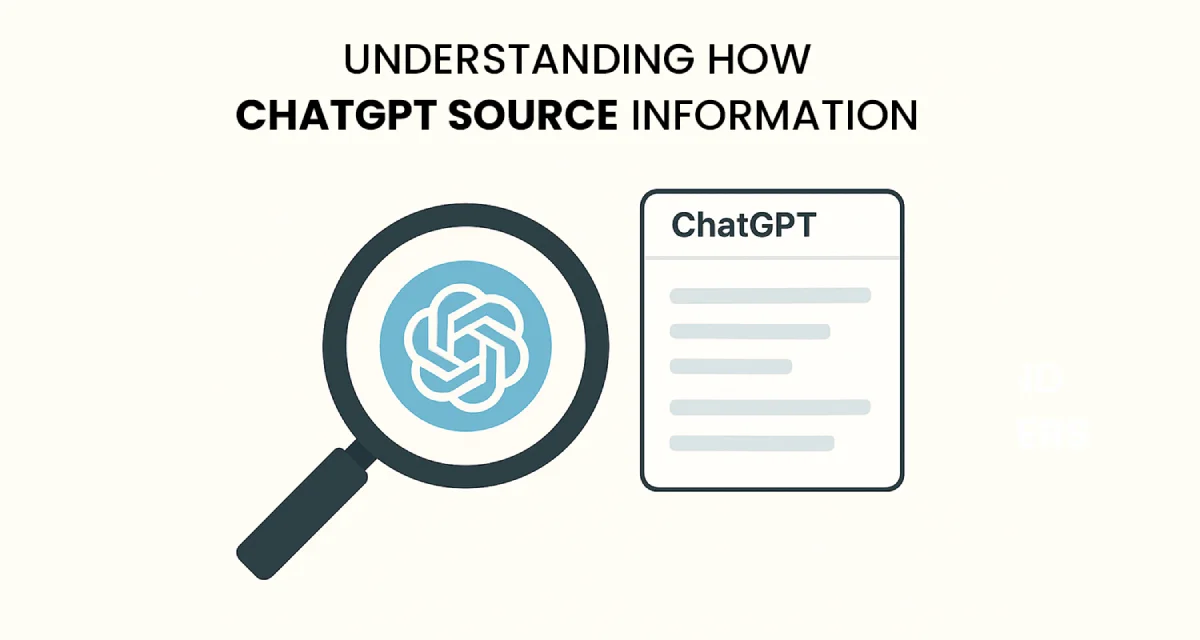
To appear in ChatGPT answers, you first need to understand how this large language model gets its information. Unlike traditional search engines such as Google Search, ChatGPT doesn’t just crawl the web in real time for every query (unless it’s connected to a live browsing tool). Instead, it relies on a mix of:
1. Training Data
ChatGPT has been trained on vast amounts of publicly available content, licensed data, and human-reviewed examples. This includes articles, blogs, trusted sources, citing sources like research papers, and other high-quality web content. If your content is well-written, authoritative, and publicly accessible, it can become part of the knowledge base future models use.
2. External Links & Web Access (in some versions)
Newer ChatGPT models can use browsing tools or connect to search engines like Bing to fetch up-to-date information. In these cases, structured data, schema markup, and clear headings make it easier for AI tools to understand and reference your content.
3. Trusted Sources & Brand Mentions
In many cases, ChatGPT relies on brands and websites it recognizes as reliable. If your digital presence includes frequent brand mentions on other authoritative sites, your content has a better chance of being surfaced in AI-generated responses.
4. User Prompts & Query Matching
ChatGPT matches queries to the closest, most relevant knowledge it has. That’s why using relevant keywords, natural language, and Q&A-style content can improve your chances of being included when users ask similar questions.
If a company publishes a helpful, in-depth article on “How to optimize a website for tools like ChatGPT,” and it’s cited by multiple industry blogs, there’s a good chance ChatGPT will mention that site when answering similar questions.
The better your content is at answering specific queries, the more likely it is to be part of AI responses, just as great SEO boosts visibility in Google.
Strategies to Show Up in ChatGPT Results
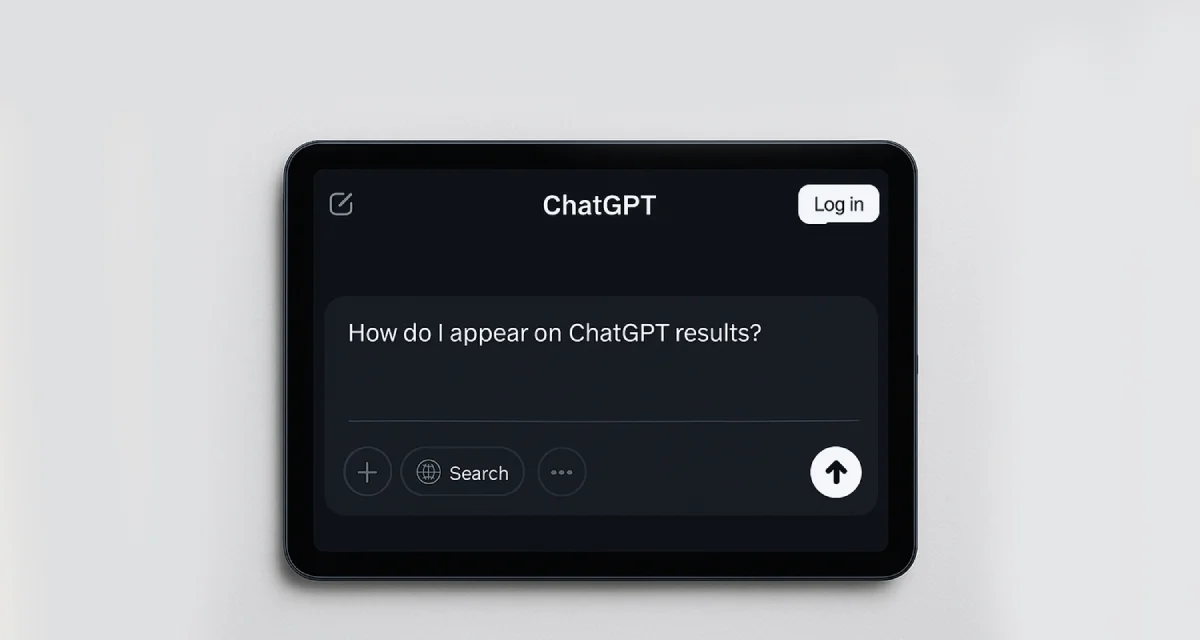
Getting your site or brand to appear in ChatGPT answers isn’t just about luck, it’s about following a clear process that makes your content easy for AI tools to find, trust, and reference. Think of it as a mix of traditional SEO techniques and AI visibility optimization.
Here are specific steps you can take:
1. Create High-Quality, Authoritative Content
- Focus on helpful, fact-checked, and well-structured articles.
- Use relevant keywords naturally so the queries you target match what users might ask ChatGPT.
- Add depth with examples, case studies, and practical solutions.
- Cite trusted sources to improve credibility.
2. Optimize for Conversational Queries
- Write content that directly answers the same question people might ask ChatGPT.
- Use a Q&A format or clear headings that match search intent.
- Example: Instead of “AI Visibility Guide,” use “How to Show Up in ChatGPT Results.”
3. Use Structured Data & Schema Markup
- Implement schema markup for articles, FAQs, and How-To guides.
- Structured data makes it easier for large language models to parse your content.
- Helps your content stand out in both Google Search and AI-generated responses.
4. Build a Strong Digital Presence
- Increase brand mentions by contributing guest posts and collaborating with industry blogs.
- Earn backlinks from high-authority web sources.
- Keep your pages updated so AI recognizes them as fresh and relevant.
5. Leverage External Links and Internal Linking
- Link to trusted sources in your content.
- Add internal links so related pages on your website reinforce each other.
- This improves SEO and helps AI tools understand your content hierarchy.
6. Match the AI’s Data Preferences
- Use clear, direct language that’s easy for a large language model to process.
- Avoid keyword stuffing, ChatGPT relies more on relevance and clarity than on sheer keyword count.
- Add bullet points, numbered lists, and short paragraphs for easy parsing.
7. Monitor and Adjust Your Efforts
- Test tools like ChatGPT by asking targeted queries to see if your site appears.
- Track traffic spikes after publishing content optimized for AI tools.
- Continuously refine based on visibility results and audience feedback.
Businesses offering services can create dedicated pages targeting both Google and ChatGPT queries. This way, you cover both traditional search engines and AI-generated responses in one effort.
How to measure Your Presence in ChatGPT Results
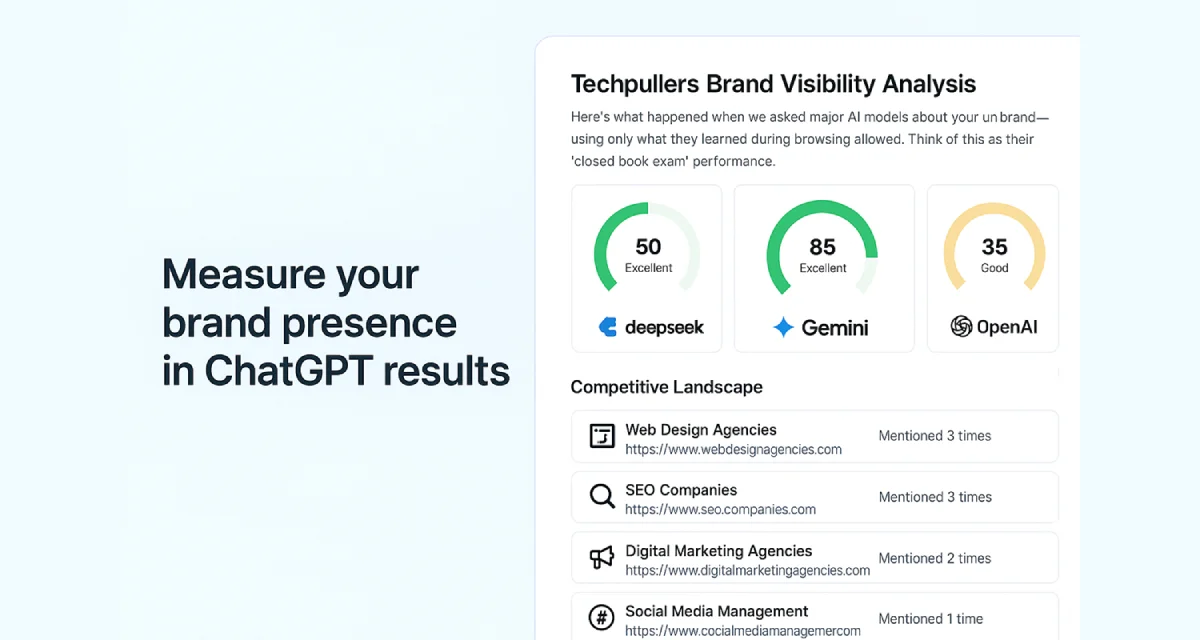
Once you’ve put in the efforts to optimize your website for AI tools like ChatGPT, the next step is knowing whether it’s actually working. Unlike traditional search engines where you can track your rank for relevant keywords directly, measuring AI visibility is a bit trickier, but it’s possible.
1. Test Queries Inside ChatGPT
- Regularly type the same question your audience might ask into ChatGPT.
- See if your brand, pages, or external links appear in the responses.
- Test variations of the query to check if your content is still appearing when users rephrase it.
2. Look for Brand Mentions
- Search for your company or brand name in ChatGPT to see if it pulls content from your site or trusted sources where you’re cited.
- More brand mentions mean better digital presence and higher chances of showing up in AI-generated responses.
3. Monitor Traffic Changes
- Use SEO tools like Google Search Console and analytics platforms to see if traffic increases after optimizing for tools like ChatGPT.
- In many cases, even if the site appears in AI answers without a direct click, the visibility can still drive audience awareness.
4. Track Backlinks and References
Keep an eye on backlinks from blogs, news sites, and trusted sources, they not only help with traditional SEO but also influence whether large language models consider your content authoritative.
Document your process. Keep a record of which queries you tested, the keywords used, and whether your pages showed up in the answers. This will help you refine your optimization over time.
Common Mistakes to Avoid When Trying to Show Up in ChatGPT Results
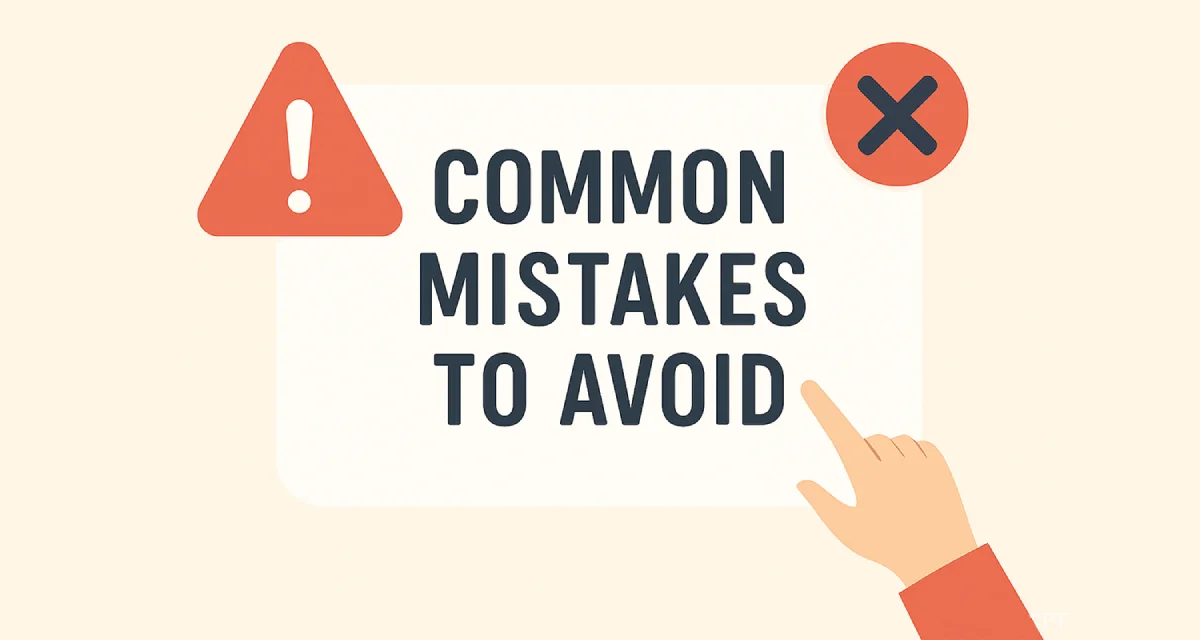
Optimizing for AI tools like ChatGPT is exciting but just like traditional SEO, there are pitfalls that can undo your hard work. Avoiding these mistakes will save you time, protect your digital presence, and improve your chances of appearing in AI-generated responses.
1. Treating ChatGPT Like a Search Engine
Remember, large language models don’t work exactly like traditional search engines such as Google Search. ChatGPT relies on training data, trusted sources, and structured data, not just keyword matches.
Focusing only on rank or top result positions in Google won’t guarantee your site appears in AI answers.
2. Keyword Stuffing
Packing relevant keywords unnaturally into your articles makes your content harder for both humans and AI to read.
AI prefers helpful, natural, and authoritative writing over keyword-heavy text.
3. Neglecting Structured Data
Skipping schema markup or clear headings can make it harder for ChatGPT to understand and cite your pages.
Structured data is like a roadmap for AI, without it, your content could be ignored.
4. Ignoring Brand Mentions and Backlinks
If your company name, blogs, or services aren’t mentioned on trusted sources around the web, you’re less likely to be seen as credible.
Backlinks still matter, they help both SEO and AI visibility.
5. Publishing Outdated or Thin Content
AI models value great content that’s accurate and current. If your pages are outdated or lack depth, they’re less likely to be referenced in responses.
Always think about users first. If your content genuinely solves a query, explains a process, or offers practical solutions, it’s more likely to get picked up in both Google Search and ChatGPT.
Frequently Asked Questions
Final Thoughts
The way people search for information is evolving. Tools like ChatGPT are no longer just novelties, they’re becoming daily go-to solutions for users, influencing where audiences get their answers and which brands they trust.
If you want your site or company to appear in ChatGPT answers, the process isn’t about chasing algorithms, it’s about creating great content, structuring it so large language models can understand it, and building a strong, credible digital presence. From relevant keywords and schema markup to backlinks and brand mentions, every optimization step strengthens your position in both traditional search engines like Google Search and in AI-generated responses.
The businesses that start optimizing now will have a head start. They’ll be the ones not just ranking for queries in Google, but also appearing in the conversations people are having with AI. In the end, visibility in both worlds, search and AI – means more traffic, more trust, and more opportunities for growth.
